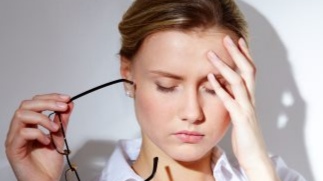How to reduce stress in a few minutes? The two exercises of a Heartfulness trainer

Breathing and relaxation can help regain deep calm. Manolie Soysouvanh, Ashtanga Yoga teacher and Heartfulness trainer, gave us two anti-stress exercises to gently act against anxiety.
What impact can stress have on the body?
Stress comes from a situation considered to be a danger to the body. The body then changes its metabolism and goes into a state of hypervigilance to be ready for action. "While this survival instinct is necessary in an emergency situation, it can have deleterious consequences for the body when stress becomes chronic" , warns Manolie Soysouvanh.
On the postural level : stress changes breathing and this has repercussions on the body, which can eventually lead to back pain (accentuated by teleworking) and shoulders.
On the hormonal level : "dysfunctions in neurotransmitters such as serotonin, norepinephrine and dopamine can have repercussions on sleep, appetite, attention, mood regulation and motivation" , teaches the Ashtanga Yoga teacher.
On the nervous level : "the hyper activation of the sympathetic nervous system (the one that prepares for action) is constant, while the recovery functions initiated by the parasympathetic nervous system decline" , warns Manolie Soysouvanh.
On the psycho / emotional level : constant hypervigilance can cause chronic fatigue, as can anxiety disorders. "When the latter are not taken into account, adrenal exhaustion and a collapse of vigilance hormones occur leading to a lethargic state, and an inability to perform the slightest task: this is the famous burn-out " , recalls the Heartfulness trainer.
How can yoga work on anxiety?
Yoga is not just a series of postures. It combines physical practice (asanas) with breathing practices (pranayama), relaxation, regeneration and meditation. These different ingredients integrated in appropriate proportions can allow the individual to find a balance.
- Asanas affect postural, muscular and circulatory matters.
- Pranayama activates the respiratory amplitude. “It stimulates the parasympathetic system and can also help us to be more active by activating the sympathetic system on the contrary , ” explains the Ashtanga Yoga teacher.
- Relaxation is a series of simple suggestions that help us relax.
- Heartfulness regeneration is a way to eliminate the emotional burdens that we carry on a daily basis. “These emotions are the content of our experiences and our emotional residue,” says Manolie Soysouvanh. Ultimately these created impressions harden, become thought trends, and shape our behavior. This auto-suggestion technique practiced daily allows our system to regenerate at the end of a day. "
- Meditation , meanwhile, would "increase the parasympathetic tone of practitioners and decrease the activation of the sympathetic system, which leads to lasting states of calm" , according to the trainer Heartfulness.
Exercise 1: how to reduce anxiety with alternate breathing
Alternate breathing balances the nervous system. It soothes and calms in case of nervousness as it stimulates in case of lethargy.
- Sitting comfortably, relax your body and mind.
- Plug your right nostril with your right thumb.
- Slowly breathe in through the left nostril and slowly breathe out through the left nostril, breathing deeply into the abdomen. Keep your lips closed.
- Plug your left nostril with your left thumb.
- Slowly breathe in through the right nostril and breathe out slowly through the right nostril, breathing deeply into the abdomen. Keep your lips closed
- Do this exercise for 5 minutes.
Exercise 2: How to relieve stress with guided relaxation.
This relaxation exercise can be done at any time, but it is particularly suitable before starting a Heartfulness meditation. Follow the suggestions below for yourself or read them aloud to guide someone.
- Sit comfortably and gently close your eyes.
- Start with the toes. Stir them. Now feel that they are relaxing.
- Relax your ankles and feet. Feel the energy enter through the soles of your feet and then rise up to your knees, relaxing your calves.
- Relax your thighs, feeling this energy flow up your legs.
- Deeply relax your hips, pelvis and waist.
- Relax your back. From top to bottom, your whole back is relaxed.
- Relax your chest, then your shoulders. Feel them literally melt away.
- Relax your upper arms, your elbows. Relax every muscle in your forearms. Relax your hands, right down to your fingertips.
- Relax your neck muscles. Focus your attention on your face. Relax the jaw, mouth, nose, eyes, eyelids, earlobes, facial muscles and then forehead, to the top of the head.
- Feel the deep relaxation throughout your body. Scan it from head to toe. And if there is still tension, pain, or discomfort in any part of your body, give it new attention.
- Shift your attention to your heart. Stay there a moment, still. Remain calm and slowly absorb yourself into yourself.
- Stay absorbed for as long as you want, until you feel ready to emerge.
